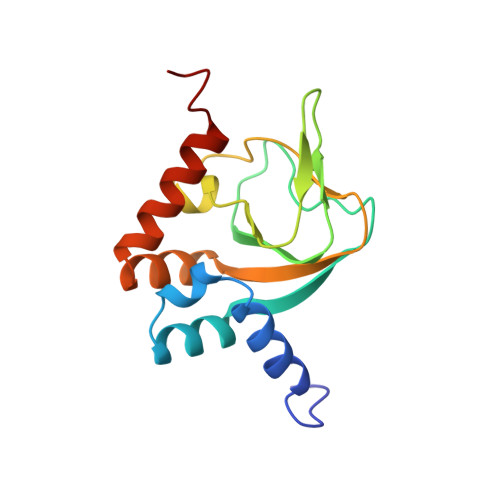Solution structure of the Mesorhizobium loti K1 channel cyclic nucleotide-binding domain in complex with cAMP.
Schunke, S., Stoldt, M., Novak, K., Kaupp, U.B., Willbold, D.(2009) EMBO Rep 10: 729-735
- PubMed: 19465888
- DOI: https://doi.org/10.1038/embor.2009.68
- Primary Citation of Related Structures:
2K0G - PubMed Abstract:
Cyclic nucleotide-sensitive ion channels, known as HCN and CNG channels, are crucial in neuronal excitability and signal transduction of sensory cells. HCN and CNG channels are activated by binding of cyclic nucleotides to their intracellular cyclic nucleotide-binding domain (CNBD). However, the mechanism by which the binding of cyclic nucleotides opens these channels is not well understood. Here, we report the solution structure of the isolated CNBD of a cyclic nucleotide-sensitive K(+) channel from Mesorhizobium loti. The protein consists of a wide anti-parallel beta-roll topped by a helical bundle comprising five alpha-helices and a short 3(10)-helix. In contrast to the dimeric arrangement ('dimer-of-dimers') in the crystal structure, the solution structure clearly shows a monomeric fold. The monomeric structure of the CNBD supports the hypothesis that the CNBDs transmit the binding signal to the channel pore independently of each other.
Organizational Affiliation:
Institut für Strukturbiologie und Biophysik, Strukturbiochemie, Forschungszentrum Jülich, Jülich, Germany.

















